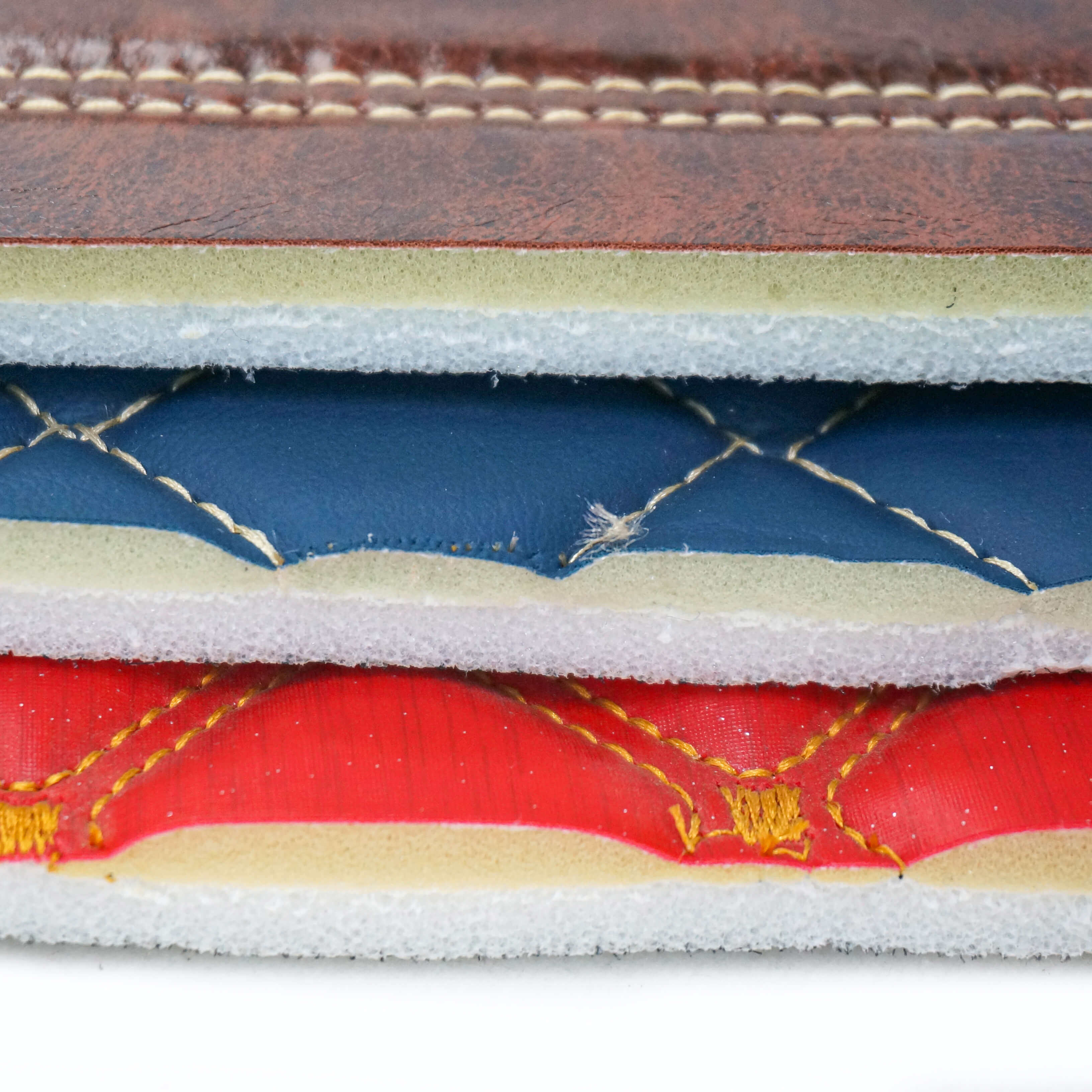Email format error
Email cannot be empty
Email already exists
6-20 characters(letters plus numbers only)
The password is inconsistent
Email format error
Email cannot be empty
Email does not exist
6-20 characters(letters plus numbers only)
The password is inconsistent

News

Difference Between PU Leather and Faux Leather
Introduction
In today's dynamic market, understanding the difference between PU leather and faux leather becomes pivotal for consumers and enthusiasts alike. As the demand for sustainable and cruelty-free materials rises, it's essential to grasp the nuances that differentiate these leather alternatives.
Definition and Composition
PU Leather, often referred to as polyurethane leather, is a synthetic material designed to mimic the look and feel of genuine leather. Its composition involves a blend of polyurethane and other components, resulting in a durable and versatile material. On the other hand, faux leather is a broader term encompassing various synthetic leather substitutes. These alternatives can be crafted from polyvinyl chloride (PVC), polyethylene, or other polymers. Both materials undergo distinct production processes, giving them unique characteristics and functionalities.
Appearance and texture
When evaluating the difference between PU leather and faux leather, one immediately notices variances in appearance and texture. PU leather often boasts a smoother finish, resembling genuine leather closely. In contrast, faux leather can exhibit a broader range of textures, from grainy to embossed patterns, offering consumers diverse aesthetic choices.
Durability and longevity
The durability aspect underscores another critical difference between PU leather and faux leather. While both materials offer decent longevity, PU leather tends to be more resilient against abrasions and daily wear. However, factors like maintenance, usage frequency, and environmental conditions can influence their lifespan.
Breathability and Comfort
A significant aspect to consider when discerning the difference between PU leather and faux leather is their breathability and comfort levels. PU leather may lack the natural breathability associated with genuine leather, potentially leading to increased heat retention. Conversely, certain faux leather variants might offer improved breathability, making them more comfortable in diverse climates.
Environmental and ethical considerations
From an environmental and ethical standpoint, understanding the difference between PU leather and faux leather is crucial. PU leather production, although synthetic, may involve processes with environmental implications. Conversely, faux leather, especially those derived from sustainable sources, presents a viable eco-friendly alternative. Moreover, for individuals prioritizing ethical considerations, opting for faux leather diminishes the reliance on animal-derived materials, aligning with ethical consumption practices.
Cost and affordability
Navigating the market, one encounters varying price points, further emphasizing the difference between PU leather and faux leather. PU leather items might lean towards the mid-range in terms of pricing, reflecting their durability and quality. In contrast, faux leather products span a broader spectrum, with prices influenced by material quality, design intricacies, and brand positioning.
Applications and Uses
The diverse applications underscore another dimension of the difference between PU leather and faux leather. PU leather finds its niche in furniture upholstery, automotive interiors, and fashion accessories, given its durability and aesthetic appeal. Faux leather, with its versatility, caters to an expansive market segment, encompassing apparel, footwear, upholstery, and decorative applications.
Maintenance and Care
Ensuring longevity necessitates proper maintenance, highlighting the difference between PU leather and faux leather care regimens. PU leather benefits from regular cleaning using mild detergents and avoiding prolonged exposure to harsh elements. Conversely, faux leather necessitates gentle care, with specific products tailored to preserve its texture and appearance.
Conclusion
In conclusion, discerning the difference between PU leather and faux leather illuminates the multifaceted landscape of leather alternatives. By amalgamating insights from various domains, consumers can make informed choices, balancing aesthetic preferences, durability considerations, and ethical convictions. As the market evolves, staying informed remains paramount, ensuring alignment with individual preferences and sustainability ethos.

